ENERGY EFFICIENCY IN THE HVAC SYSTEMS
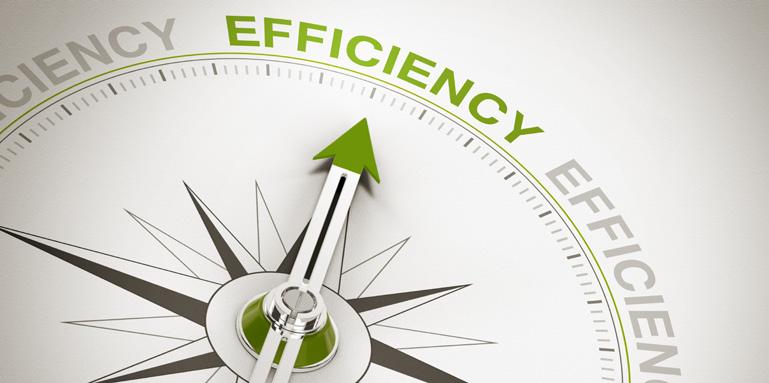

COMMON MYTHS IN ENERGY MANAGEMENT – BUILDINGS


MOTO & FUTURE MOTORS CASE STUDY









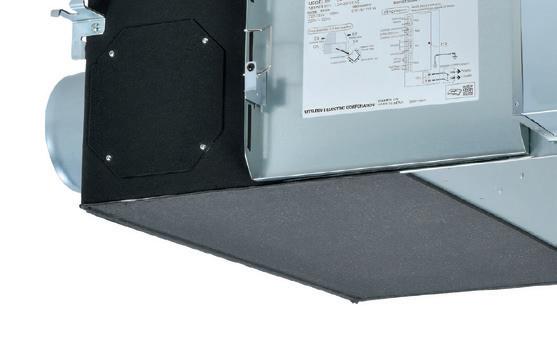


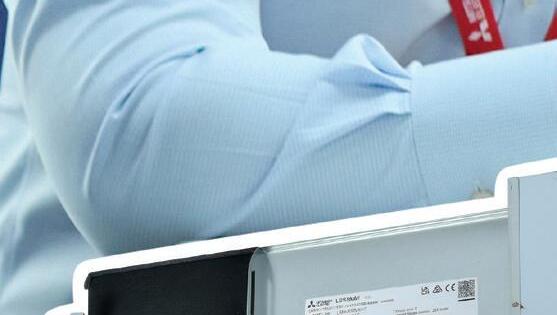




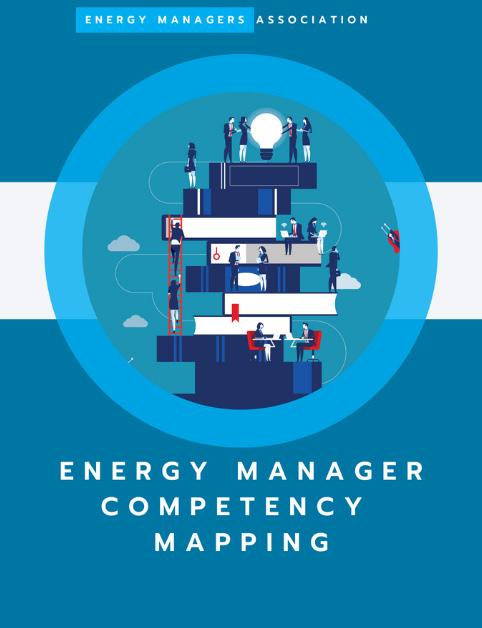


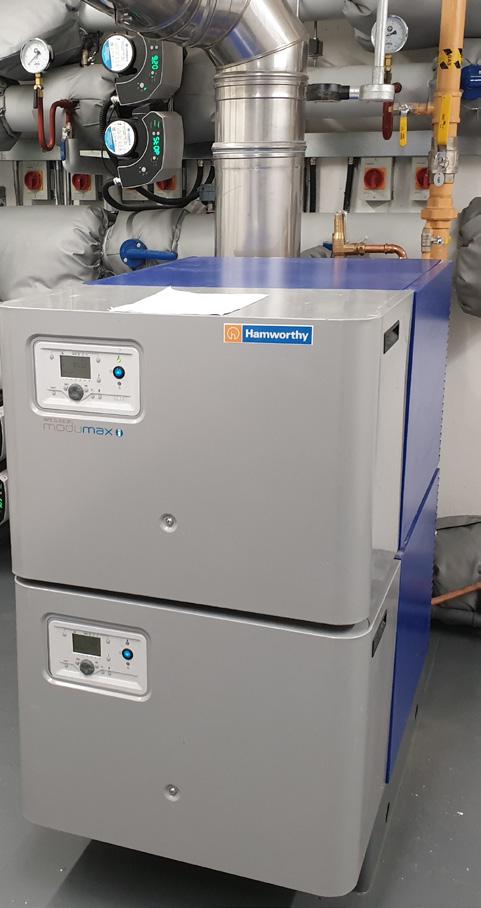




ENERGY EFFICIENCY IN THE HVAC SYSTEMS


COMMON MYTHS IN ENERGY MANAGEMENT – BUILDINGS


MOTO & FUTURE MOTORS CASE STUDY
























As change has become a constant in our lives, the ability to drive change is now a critical part of energy management. As energy management professionals, you are change makers at the forefront of executing the change to reduce energy use, energy cost and carbon emissions, and enabling the shift from fossil fuel economy into cleaner and greener future.
It’s an exciting time, but we know also a challenging time, as you navigate your business cases, array of available solutions, available information and skills development to guarantee successful projects that truly deliver anticipated reductions and so vital change. As organisations are being called upon to deliver more and more energy and carbon projects, to drive change to decarbonise and reach net zero, delivering well informed and structured projects, with ever so diminishing margin for error, must become a norm.
Here at the EMA, we are continuing to offer engagements such as the new EMA Company Membership initiative, to help you build robust and well-informed energy management practices by tapping into our sector leading expertise and practical resources. Available behind this foreword are articles demonstrating such expertise marbled with practical ideas and implemented projects. One of our features focuses on energy efficiency in HVAC systems, another delves into de-mystifying aspects of energy management in buildings, and that’s only the first thirteen pages!
We trust that this issue will prove to be informative, engaging and thought-provoking, and that it will inspire you on your own energy management journey.
Enjoy reading, and if you have any news, projects and expertise that you would like to feature in the next issues, please email details to ema.team@theema.org.uk

Yours, The EMA Team
PUBLISHER
The EMA Magazine is published quarterly by the Energy Managers Association (EMA).
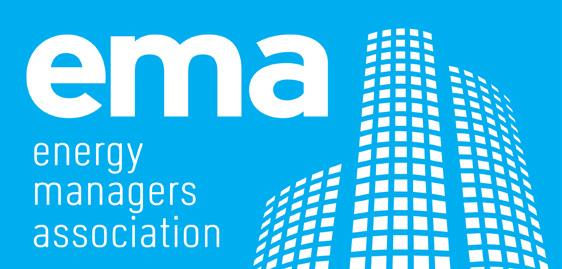
EDITORIAL
The Energy Managers Association
www.theema.org.uk
Tel: 0203 916 5516
CONTACT
Edita Krupova; Editorial Enquiries & EMA Membership Services Manager edita.krupova@theema.org.uk
CONTRIBUTORS: Simon Mitchell, Chris Norburn, Victoria Limbrick, Kirsty Rice and Neil Brown
The EMA would like to thank to the above contributors for their time and effort in providing the content and making this issue possible. Their willingness to share experience and knowledge is exemplary and inspiring, and we hope it will encourage others to come forward and contribute in the future.
ADVERTISING SALES
The EMA Team Tel: 0203 916 5516 enquiries@theema.org.uk
ABOUT EMA
The Energy Managers Association (EMA) was set up in February 2012 and represents Energy Managers across all industries. Our priority is to improve the position of energy management experts and their profession and act as their united voice. We aim to develop the skills, knowledge and experience of professionals through our training, high-quality peer to peer guidance and best practice exchange.
@2023 Energy Managers Association, Registered in England and Wales, Company No 7943728, VAT No 151339624, Registered Address: Suite 77, 95 Mortimer Street, London, W1W 7GB.
No part of this publication may be reproduced, stored in, or introduced into a retrieval system, or transmitted in any form or by any means (electronic, mechanical, photocopying, recording, or otherwise) without prior written permission. Any information or material sent by advertisers and contributors, including advice, opinions, drawings and photographs, is the view and the responsibility of those advertisers and contributors, and does not necessarily represent the view of the EMA.








Heating, ventilation and air conditioning (HVAC) systems are an essential part of most modern buildings and can consume a large part of any energy used. They come in various shapes and sizes, and operating them to achieve more energy efficient systems requires the understanding of the technology as well as the environment they are used in. We have asked two energy management professionals to present operational insight into controls, optimisation and potential traps to avoid with HVAC systems to ensure their efficient operations.
Building Management System (BMS) control provides an enable signal to each boiler as required to meet heating demand and sequences weekly rotation of lead boiler. LTHW flow temperature is set on the boilers’ controls.
IN FOCUS:
Heating Systems: Boilers –Natural-Gas Fired
SYSTEM IN PLACE: Commercial gas fired heat generators, modern condensing boilers installed less than 10 years ago, but onto a system designed for the previous noncondensing boilers and operating at a lower efficiency. Providing Low Temperature Hot Water (LTHW) for space heating via Air Handling Units (AHUs) and Domestic Hot Water (DHW) via a Plate Heat Exchanger (PHE).
CURRENT CONTROLS & OPTIMISATION:
LESSONS LEARNT FROM OPERATING THE SYSTEM: Condensing boilers have been available for over 40 years with uptake in the UK commercial market only taking off after Building Regulations (Part L2B: Conservation of fuel and power – Existing buildings other than dwellings, 2000) came into effect in April 2006. This increased the minimum heat generators’ seasonal efficiency and made it more difficult to use noncondensing replacements. With a focus on minimising CapEx cost, replacement heat generators were selected that could operate with the highest efficiency in condensing mode but never have, as the system design and controls were not adapted to allow cool system
water to reach the boilers’ return connections. Once installed, it is often too difficult to optimise these boilers and allow them to operate in condensing mode thus valuable energy is wasted.
FUTURE CHANGES: This common situation could frustrate plans to decarbonise buildings, making upgrades more difficult. Additionally, maintenance of the building services has often been given a low priority and the building operator may be looking for Net Zero on the cheap without addressing maintenance backlogs.
However, with the right strategy, elements such as the heat emitters could be replaced to allow operation with lower flow temperatures, and controls could be upgraded compensating the flow temperature to the outside air delivering savings now through more efficient operation, but also future-proofing the system for heating via heat pumps or a heat

network connection.
IN FOCUS: Heating systems: Heat Pumps (HP)
SYSTEM IN PLACE: Air Source Heat Pump (ASHP) replacement of gas-fired heat generators in LTHW system providing space heating via AHUs and DHW via a PHE. Maintenance of the HP is via a service agent with the rest of the heating system maintained by in-house maintenance operatives.
CURRENT CONTROLS & OPTIMISATION:
BMS enables HP’s proprietary control system that controls its compressors and fans. BMS controls AHUs and heating circulators.
LESSONS LEARNT FROM OPERATING THE SYSTEM:
Needing to decarbonise in line with the company’s Net Zero strategy, end of life gas-fired heat generators (boilers) are replaced with a packaged ASHP system. As the original flow temperature cannot be achieved by the HP, the AHU coils have been replaced with larger heat transfer surface area coils. A convenient outside location close to the plant room was available here, but often the large and heavy outdoor units can be difficult to accommodate. The circulators were resized to allow for operation at higher flow rates due to the narrower deltaT.
Understanding that the HP was
able to heat the DHW but not to the temperature required for pasteurisation, point of use electric water heaters were considered, but the existing calorifier was retained with a higher output immersion element providing top up heating when required for legionella control. This helped to minimise the additional capital expense of the low carbon upgrade compared to replacing the boilers only.
Optimisation helped to improve the HP’s performance reducing operational costs but this would have been more difficult if the BMS had not been integrated with the HP’s control system as is often the case.
Taking advice from specialists, the company selected heat pumps using refrigerant R32 as a good balance between its performance, Global Warming Potential (GWP), toxicity and flammability. The company is aware that the EU F-Gas phasedown will restrict the use of higher GWP refrigerants, and as the market matures there could be a wider range of available technologies for the next building upgrade.
Site maintenance teams needed training on the new heat pump and its controls to understand how to manage it for best efficiency rather than treating it as an electric version of the boilers that they were familiar with.

Once installed, the heat pump systems were shown to be delivering carbon emissions’ savings, but operational costs had increased significantly, especially in cold weather when HP was operating at a lower Coefficient of Performance (CoP).
The common theme is that heating equipment replacement has the potential to deliver significant energy efficiency improvements, saving money and carbon if done well. But often value engineering, a limited budget based on an underestimate of the changes required, lack of communication between stakeholders and timescales dictated by the risk of failure rather than planned replacement conspire to undermine the potential benefits.
Author’s profile: Simon is a Chartered Engineer working as an Energy & Technical Solutions Manager for Mitie Energy. He has decades of experience helping clients understand and find solutions to their energy related challenges.

IN FOCUS:
SYSTEM IN PLACE:
The site is a large retail outlet where the BMS system has been integrated with Heat pumps, Air Conditioning (AC) and Variable Refrigerant Volume (VRV) units, Packaged AHU, lighting controls, PV systems and smart meter networks. Integration includes both Modbus and BACnet communications.
The sitewide communicationmultiple control panels - is via the customer’s internal IP network in collaboration with the customer’s IT department. The site is 5 years old and has a monthly maintenance regime in place. The site has remote connectivity with full proactive monitoring via a remote service package.
The BMS has been engineered to control and monitor the site’s HVAC assets and plant – the main focus is on the design to provide the below benefits.
1. Improve and then maintain the site’s energy performance and carbon emissions.
2. Ensure staff and visitor health, wellbeing and comfort at all times.
3. Improve maintenance efficiencies – both labour and costs, to reduce reactive call outs and negate the need for manual interventions by site staff.
4. Provide online and site dashboards to inform the owners and the occupants on how the building is performing from both an energy and environmental aspect.
5. Critical alarms proactively report via the online portal, email and GSM - to ensure issues are dealt with immediately (to meet agreed KPIs) to reduce impact on the site’s environment and energy performance. Proactive alarms report directly to the portal as well as the customer’s engineering helpdesk and out of hours call out engineers’ mobiles.
6. The network of smart meters report proactively with alarms should any areas and/or assets exceed agreed energy thresholds set up – including PV generation plants.
7. The customer and its approved supply chain has full access to
the online portal and monitoring dashboards.
BMS systems are intended to control and monitor a site fully to ensure maximum energy performance is as designed, to ensure best environmental conditions within, and to keep wastage (cost and consumption) costs to a minimum.
To receive the maximum benefits from a BMS design – the system should control and monitor all aspects and assets associated with how the building operates – this includes heating, ventilation, air conditioning, lighting, renewables, on site generation, utilities and environmental monitoring (including air quality). Aligned to this can be added more Facilities Management assets such as fire, security and compliance monitoring (emergency lighting and legionella checks, etc).
Sadly – mainly due to designs, specifications and costs – BMS

systems mainly consist of HVAC only.
The main cause of reduced specifications and designs is the fact most BMS systems are installed on a return-on-investment business case. This is where the problem is – how the business case is created and what features and benefits are being sold. In the main, the business case is reporting on savings to be made from energy reduction only. However, in principle, a BMS business case now covers many aspects for improving a customer’s bottom line profit. In addition to reduction in energy costs, the below viable cost saving should also be factored into the business case:
• Improvement in maintenance efficiencies.
• Improved life cycle costs.
• Improved staff comfort and wellbeing (less absences and improved staff performance).
• Improved energy procurement and reduced fixed charges.
• Assistance with legislation and compliance mandates.
Originally, the site being discussed didn’t have full integration but had systems in a ‘silo’ set up – controlled independently of each other. This had a negative effect on the building’s systems and performance as it negated the opportunity for a more demand led control strategy
being implemented. Since full integration was implemented, we can now control the heating, ventilation and air-conditioning all in tandem with each other rather than as it was before, fighting against each other. For example, we now have ‘dead-band’ control where heating can’t be used when cooling is enabled and we can now ensure we use the free heating/cooling available from the external ambient conditions.
non-critical and/or simple system changes (set point adjustments, etc). This became expensive and increased the embedded carbon emissions associated with call out travelling. The remote monitoring reduced both with immediate effect.
FUTURE UPGRADES:
Now the site has been reengineered as detailed – all with the aim of improving the energy performance and maintenance efficiencies –savings of over 20% are being realised and maintained. The savings are now being reinvested - ‘save to invest to save’ approach - to allow for more energy efficiency measures to be implemented - business cases now being discussed for below projects:
• Heat recovery systems.
The system also didn’t have proactive alarm reporting and all alarms were reporting to a desk top located in the plant room – which wasn’t accessed easily or regularly, and meant issues went unnoticed for long periods between site maintenance visits. The results now show a reduction in call outs, plant failure down time and improved internal environmental conditions for the staff.

Before remote connectivity and monitoring was instigated, the customer was experiencing a lot of ‘unnecessary’ call outs for
• Utility (gas and water) monitoring.
• Additional monitoring.
Author’s profile: Chris is a fully trained and qualified Electrical Engineer and a certified Low Carbon Consultant with affiliations to multiple industry organisations such as The Energy Institute, ESTA, CIBSE, Chamber of Commerce, and The UK Engineering Council amongst many others. Chris had, up until forming Cantec E.S, held Operations Director and Business Management roles for multiple large energy management companies during the previous 20 years.
Decentralised generation and supply of electricity and heat for operation with natural gas, biogas, other lean gases, biomethane, and hydrogen.
• Increase profit
• Save on energy costs
• Boost efficiency
• Full turnkey solutions
• Power range between 20 and 4,500 kW

• Containerised solutions to reduce noise
• Full-service solutions

Our 2G CHP range can be retrofitted to run on 100% hydrogen whenever you are ready, setting you up for a net zero future. Natural gas today, hydrogen tomorrow.

As more individuals venture into the world of energy management and all nooks and crannies of buildings are inspected with the aim of scoping possibilities for energy and carbon reduction, it is essential to separate facts from fiction when it comes to anticipated savings, occupants’ use or business cases. In this article, Victoria Limbrick is challenging common myths about energy management in buildings and sheds a light onto what a reality actually looks like.
In fact, energy managers often spend a great deal of time with consultants and suppliers to develop the most energy efficient solution to a system change only to find that the expected savings don’t materialise.
As soon as you put human beings into a system you need to ensure they understand how it is controlled and how it works. This is especially important if the system is different from those most people have at home. For example, if you are installing heat pumps which now include air conditioning, you need to ensure people aren’t opening windows when the temperature
rises, this is a natural instinct and what most of us do at home, but it can lead to huge energy wastage.
Engagement with the occupiers is key to embedding new energy saving schemes, as much because there might be some differences in temperatures, new air supplies can cause draughts which can really impact on individual acceptance of the new system and willingness to give it a chance or adapt their day to day work to include a new shutdown process.

A recommendation is often made to turn off lights or turn down heating but, in fact, in larger offices or warehouses the staff are unlikely to have control over heating temperatures or timings and the lighting controls are often centralised or complex switchbanks which staff won’t feel confident to use.
It is important to speak to staff and see what control they can have and also what they would want, it may be useful to give training or put up simple signage to explain how lighting switches work or how room thermostats/controllers work as often they are not as simple as they seem.
If you have a lighting replacement project in development, ensure that local usability of controls or full automation form part of the project. In some cases full automation in one area but switching in others can lead to increased complacency with switching off lights in manually controlled areas so consider the behaviour change required alongside the technology.
COMMON MYTH:
WHO DON’T KNOW HOW TO USE CONTROLLERS DON’T TOUCH THEM
Following on from the previous point, another fact is that often staff may not fully understand how to use heating/cooling controllers but are still not comfortable and so try to set the local controller to settings they think will improve the temperature. They may inadvertently be overheating spaces which then need cooling or changing controllers to manual which means central control doesn’t govern timings as expected.
A quick check of local controllers can give a valuable insight into why systems are running unexpectedly.
Speak to staff in the areas where local controller settings are often changed to understand what the issues are so that central control can be improved, upskill them on

how to best use the controller and to understand the energy wastage they may be inadvertently causing.
When you have a busy job or you are comfortable with your daily work routine, no matter how important climate change or cost savings may be to you, getting the job done is your first priority.
Energy managers have the luxury of having energy saving and carbon reduction as their priority and focus but the fact is that this is not the case for the majority of people you work with, so factoring in the impact on their day to day role and their capacity to engage with any change is vital.
Does the action you want them to take make their job easier or inspire real engagement? Ideally the answer to this will be yes, but the reality is that it won’t always be and in these cases factoring in resistance, capacity and engagement into the project at an early stage will help to deliver a more successful project with realistic timelines and expectations. It will also avoid managers and staff being disengaged because they think time is being taken away from their core role or that they are being asked to do additional work they hadn’t expected.
Lack of ownership because employees don’t pay the bills is often a behavioural barrier to overcome, providing motivation through bonuses or other recognition can encourage engagement but in some cases it may be necessary to consider
penalties for poor behaviour, especially where significant energy losses can occur if systems are left running, e.g. manufacturing processes or catering kitchens. This is particularly important with rising energy costs becoming an increasingly significant factor in profitability and in some cases viability for many sectors and it may be appropriate to communicate this to employees.
Leadership and culture are key in these cases. If the leaders of the business are supportive of the work and demonstrate to staff and managers that time spent on this is valued by them and core to the business, this will enable and encourage time to be spent on it, whether that is attending working group meetings, taking training, spending time changing processes or simply thinking about it at all!
Capital investment and through life cost savings form the majority
of most business cases and are of course key to getting budget holder sign off. However, it is important not to ignore other benefits which may be safety related like reduced working at height if reducing the need to change fluorescent lamps.

Where an internal facilities team are in place is can be difficult to calculate the time spent on maintenance compared to where contractors have to be brought in and a service contract cost or invoice can be used. Their hours are often harder to account for as routine maintenance is often accounted as one task, but the savings can be significant and bolster the business case by offering the team more time to focus on other areas.
COMMON MYTH: INSTALLING MM&T WILL AUTOMATICALLY DELIVER ENERGY SAVINGS
MM&T can be a very powerful tool in enabling effective energy management. However, the fact is that it can also be a very expensive measure which will not in itself
deliver any energy saving.
The metering strategy should address the needs of the organisation and its energy use in order to drive real improvement in energy consumption. There should be a clear link between the meter being installed and a desired outcome or reporting requirement.
MM&T should be paired with an energy data strategy, undergoing regular review and reporting to stakeholders who have influence over either the way energy is used or financial investment in future energy saving projects.
It can be tempting to meter every available circuit, however unless you have an effective way of making use of that data it will be likely to be wasted effort and expense. Most MM&T systems can be expanded over time so it may be beneficial to

install meters on a small number of circuits with provision for future expansion. Business cases should consider a rolling investment plan rather than a one off, although this may not always be practical and then a balance will need to be struck.
It is always important, if possible, to do a follow up visit after a few months of the audit or of completion of an energy saving project to see whether the changes made have been fully implemented or if any of the behaviour change has embedded.
This makes sure you get best value out of the original visit and will help to inform future audits and projects to see what worked, what didn’t and what could be done better.

An energy audit is one of the most invaluable tools an energy manager has but like an MOT on a car it is only a snapshot of how a building is being used on a particular day or during the period you have managed to get data for.
Author’s profile: Victoria has over 17 years of energy and carbon management experience across commercial, residential, education, emergency services and construction sector. She has managed energy efficiency projects, renewable installations, identified and delivered opportunities for strategic decarbonisation and energy efficiency across organisations’ operations and activities.
The UK government’s Net Zero Strategy sets out the nation’s pathway to Net Zero. Whilst there is no clear directive for UK organisations to set actual Net Zero targets, there is an increasing requirement to demonstrate to numerous stakeholders that climate risk and emissions are being tackled. These might be responding to customers, shareholders or competitor drivers and the message is also reinforced through regulatory requirements such as Streamlined Energy and Carbon Reporting (SECR) and Task Force for Climate-Related Disclosures (TCFD).
Organisations have responded to these drivers through setting their own targets for greenhouse gas (or carbon) emissions reductions, with the ambition to go carbon neutral or net zero. Until a few years ago, these terms were considered interchangeable, but with the publication of documents such as the Science-Based Targets Initiative (SBTi) Corporate Net-Zero Standard, together with increased scrutiny on greenwashing, it is incredibly important for target-setting and environmental claims to be transparent and credible.
Which option is right for your organisation will depend on which

stage you are at on the emissions reduction journey, whether you would like to go for verified targets and the level of investment (both financial and resourcing) your organisation is willing to provide. However, the use of the right terminology is key to ensure all key stakeholders understand what the company has signed up to and is trying to achieve.
Carbon neutral is essentially about ensuring that an organisation’s emissions are tackled through reduction and off-setting through carbon credits. This involves measuring the organisation’s footprint across Scope 1, 2 and (optionally) 3 and deciding on the appropriate reduction and offsetting pathway. There is no limit to the amount of off-setting which can be done, so in theory 100% can be off-set through carbon credits. This approach is particularly appealing when the Scope 3 emissions are difficult to tackle and can sometimes be a stop-gap approach on the way to Net Zero. It also can help the organisation to set out their initial commitment to tackle climate change, with the intention to accelerate into Net Zero at a later date.
Concerns about carbon neutrality disclosure can be alleviated by certification under PAS2060, an internationally recognised BSI standard. This involves setting out specific targets, timelines and a pathway to achieve carbon neutrality. It also requires the use of credible off-setting schemes (e.g., the Verified Carbon Standard).
Whilst emissions reduction is encouraged to achieve Carbon Neutral, complete flexibility is allowed in the approach to using off-setting, including the types of projects which can be invested in, which can avoid, reduce or remove carbon. This can cover anything from carbon sequestration through tree-planting, to community water projects, to renewable energy generation.
• Requires carbon footprinting and ongoing measurement to quantify carbon off-sets, which can help the organisation become more informed about their key impacts.
• Can help energy and sustainability managers to gain acceptance from the senior management or board to provide an initial commitment to carbon reduction.
• Generally seen as lower

investment and time-resource than tackling carbon reduction, especially for Scope 3.
• More flexible than Net Zero as the organisation can access different kinds of carbon off-setting schemes.
CONS
• Does not necessarily require Scope 3 footprinting, which could mean that over 90% of an organisation’s value chain emissions may not be accounted for.
• Using carbon credits could be seen as a licence for organisations to continue to operate in the same way without change or active carbon reduction.
• The volume of credible projects and carbon credits is limited and unsustainable. Oxfam’s report “Tightening the Net” details the sheer land mass required for meeting offsetting commitments. In the report, Oxfam explain the volume of carbon credits required to meet off-setting for every organisation with carbon commitments would require a land mass five times the size of India and, additionally, the knock-on impacts on food production and communities.
• In the wake of increasing Net Zero commitments, carbon neutrality may be seen as less ambitious and un-competitive compared with other organisations leading the way.
Net Zero is considered more holistic, sets a higher bar and requires organisations to go further than Carbon Neutral. Net Zero is about being accountable for all

the emissions an organisation is responsible for emitting across their whole value chain, from upstream emissions such as manufacturing to the organisation’s on-site operations to downstream emissions such as customer use of a product.
Committing to Net Zero involves assessing the greenhouse gas footprint across ALL emissions from Scope 1, 2 and 3 and creating a reduction pathway. A limited use of carbon credits is allowed, but the primary focus is the active reduction
Paris Agreement. Many large and/ or global organisations are already signed up to this framework, it is only available at a parent level. It involves setting a near-term and a long-term target to achieve Net Zero by 2050.
There are also alternatives schemes such as the Carbon Trust’s Route to Net Zero standard, which provides 3 certification stages, depending on where the organisation is in setting their targets and reducing emissions.
However, it is not a requirement to join any scheme/standard to set a Net Zero target, this will depend on the size of your organisation and/or your stakeholder requirements.
(and avoidance of the creation) of emissions across each scope. The outcome should be zero emissions. There are several guides to help organisations create their pathway to Net Zero, including the EMA’s Net Zero guide for energy managers.
The organisation may also decide to sign-up to or follow the principles of the SBTi, which provides independent verification that the organisation’s targets and performance will lead to reductions to limit emissions to a 1.5oC temperature rise as per the 2015
Above all, the organisation needs to set a transparent and clear pathway for emissions reductions, which does not rely on carbon credits. This would include operational and wider value chain (downstream or upstream Scope 3) emissions, involving - for examplegood energy saving practices, decarbonisation with renewable energy sourcing and/or on-site generation, working with key suppliers within your goods and services supply chain, and reducing customer emissions related to product use.
Assessing an organisation’s Scope 3 emissions is a challenging and sometimes complex exercise which should ideally be undertaken to the best of the organisation’s abilities before a commitment to Net Zero commitment is made. A significant proportion of Scope 3 emissions
ESB Energy drives sustainability and decarbonisation right to the heart of business strategy, providing organisations with accessible funding, innovative and future proofed programmes. Together, we are building a brighter future for business in the UK.
Let’s make the future brighter, together.
Our services include
Project funding
Energy audits
Systems design
Project management
Engineering
Procurement
Construction
Monitoring and analytics
System optimisation
Ongoing consultation
Power purchase agreements
may be outside of the organisation’s influence or have limited data available and it is therefore acceptable to use estimations for activities, with a view to improving these over time. Details on all scopes included in an organisation’s Net Zero commitment should be clearly defined and presented in the organisation’s Net Zero strategy.
Under Net Zero good practice, the organisation should limit the amount of carbon credits (ideally to less than 10%), which means active reduction of emissions (ideally by at least 90%). Unlike Carbon Neutral, the carbon credits for the residual balance should only be sourced from carbon sequestration or carbon capture projects which remove and store emissions.
• Net Zero demonstrates that the organisation takes climate change and emissions reductions seriously.
• Going Net Zero requires a significant reduction in emissions for which the organisation is directly or indirectly responsible for, which improves the environmental impact across its operations, suppliers and customers.
• Signing up to an independent verification scheme can demonstrate clear ambition and provide assurance to stakeholders.

• Supporting others, such as your suppliers, to reduce emissions can help to form closer relationships and long-term partnerships or, in
the case of customers, build trust in your brand.
• Sustainable change takes work - it requires commitment, investment, and time-resource from all parties to make active change happen, from leadership teams, to energy/environmental managers, to suppliers.
• Over 90% of emissions must be reduced to avoid misuse of the term Net Zero. Depending on your organisation, Scope 3 can represent a significant proportion of
• Be clear in communications whether the organisation is aiming for Carbon Neutral or Net Zero to avoid future misunderstandings of greenwashing, particularly when it comes to external and customer communications.
• Re-establish intent from the senior leadership or board –inform them of developments on Net Zero to ensure they are aware of the difference between this and Carbon Neutral so they are clear about what they have signed up to.
• Scope 3 may seem like a huge requirement and it can be overwhelming to know where to start –seek advice and share with others, also start with what you can control or influence.
• Other terms such as Carbon Negative and Carbon Positive may be thrown into the mix – assess what you feel is right for your organisation, particularly if you are just starting out.
emissions over which you may not have direct or any influence.
• Be wary of consultants who mix up Net Zero with Carbon Neutral and vice versa, if they cannot clearly communicate with you or misunderstand the current thinking on Net Zero, then they are unlikely to help create an effective reduction pathway. It is ok to use both approaches, but be clear about the ultimate target and what you are aiming for.
Author’s profile:
Kirsty is a sustainability professional with experience of developing strategic direction, delivering practical solutions and providing day-to-day advice. Her current role involves delivery of a Europe & Middle East Net Zero plan, corporate reporting requirements and community engagement. Kirsty’s previous experience is across commercial, public body and charity sectors, and she is a qualified Low Carbon Assessor, ESOS Lead Assessor and PRINCE2 Project Manager.

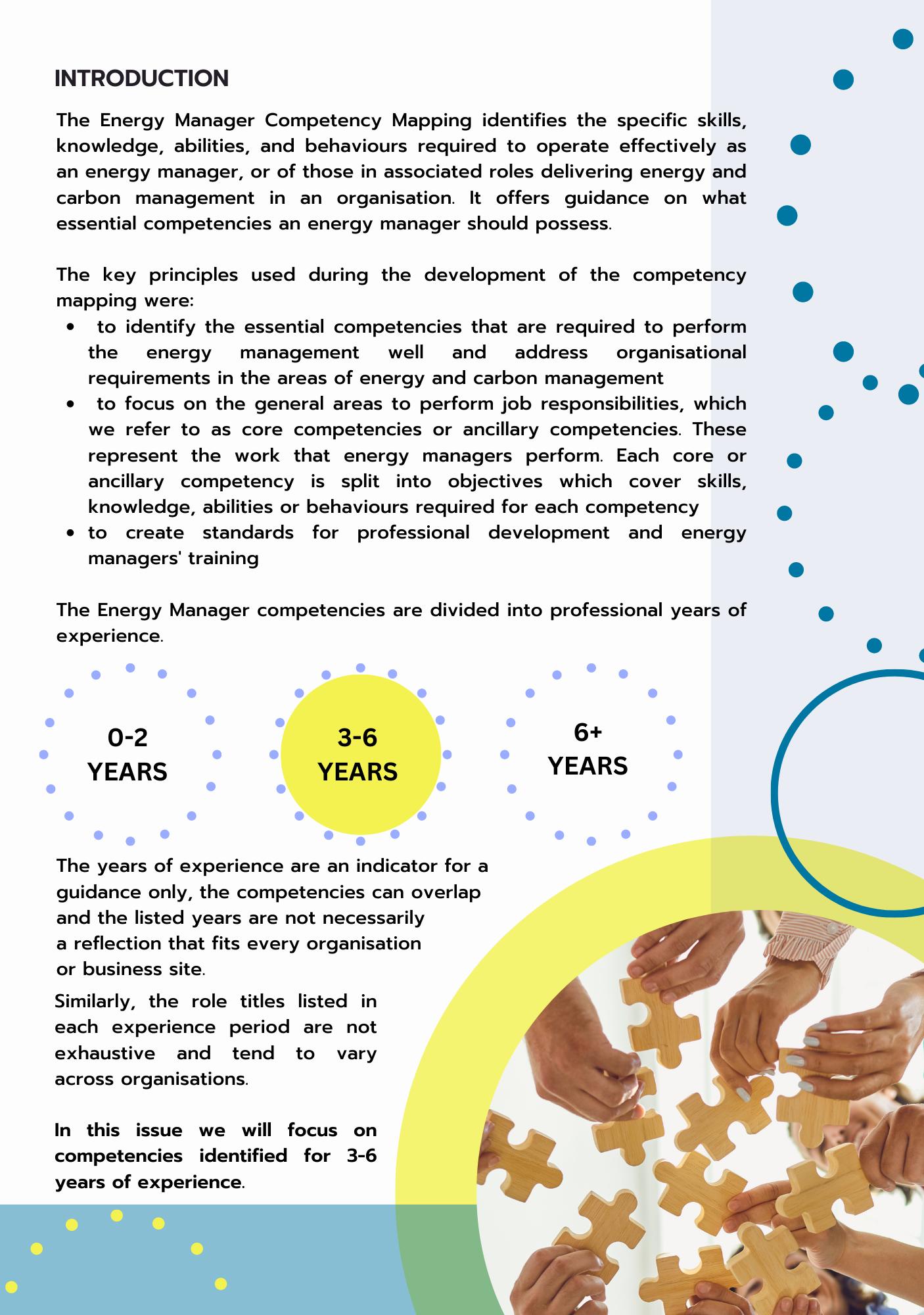




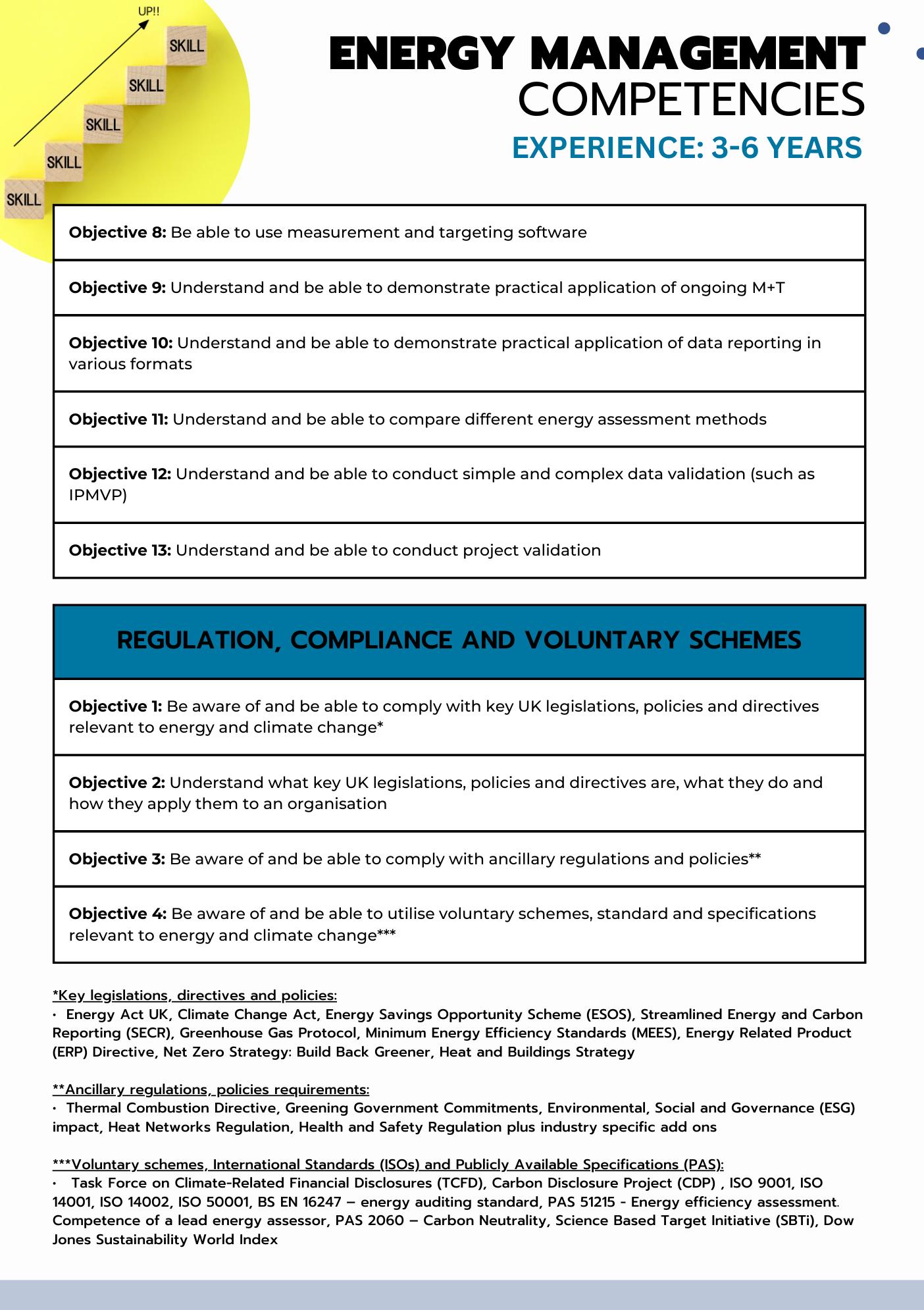
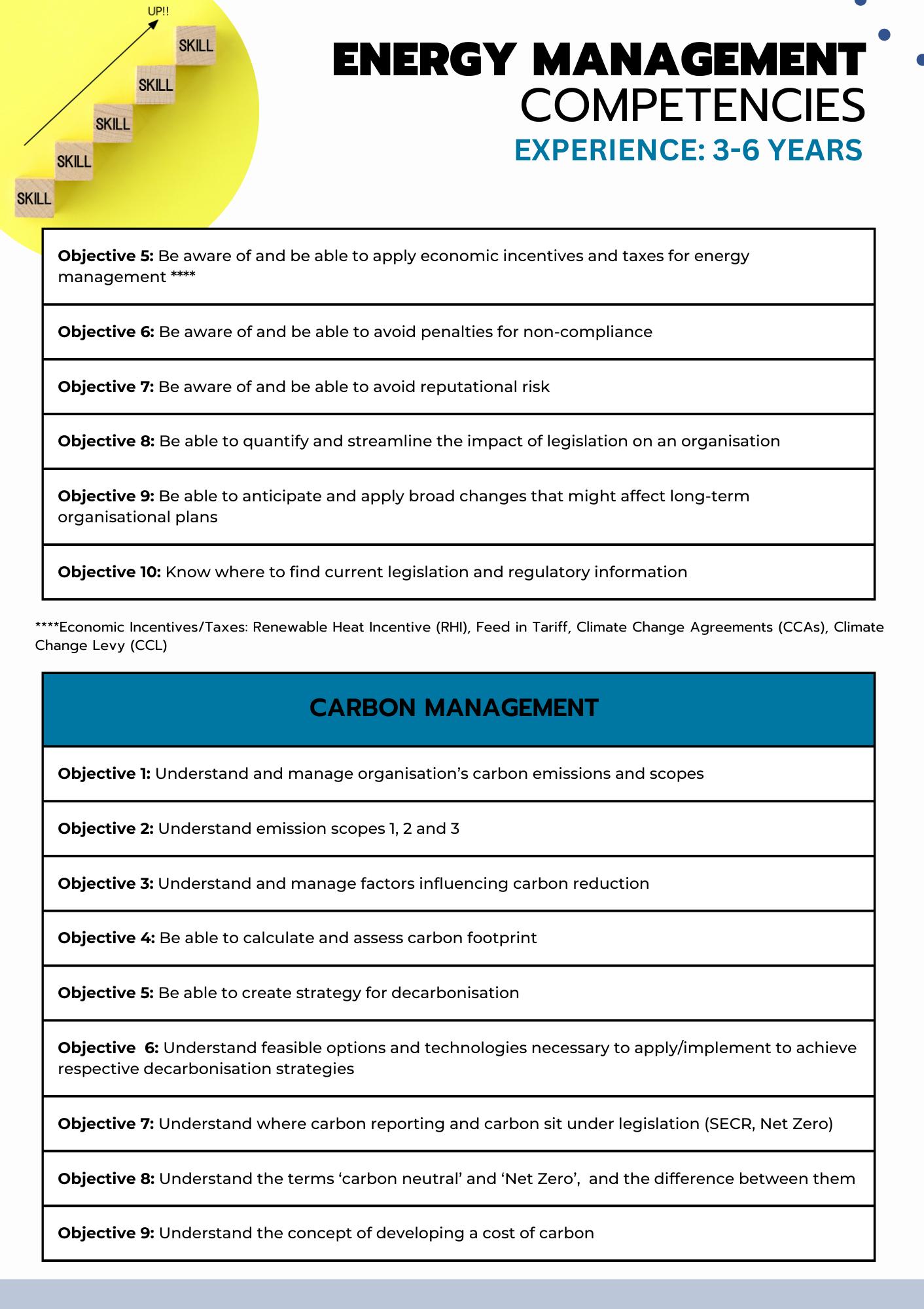



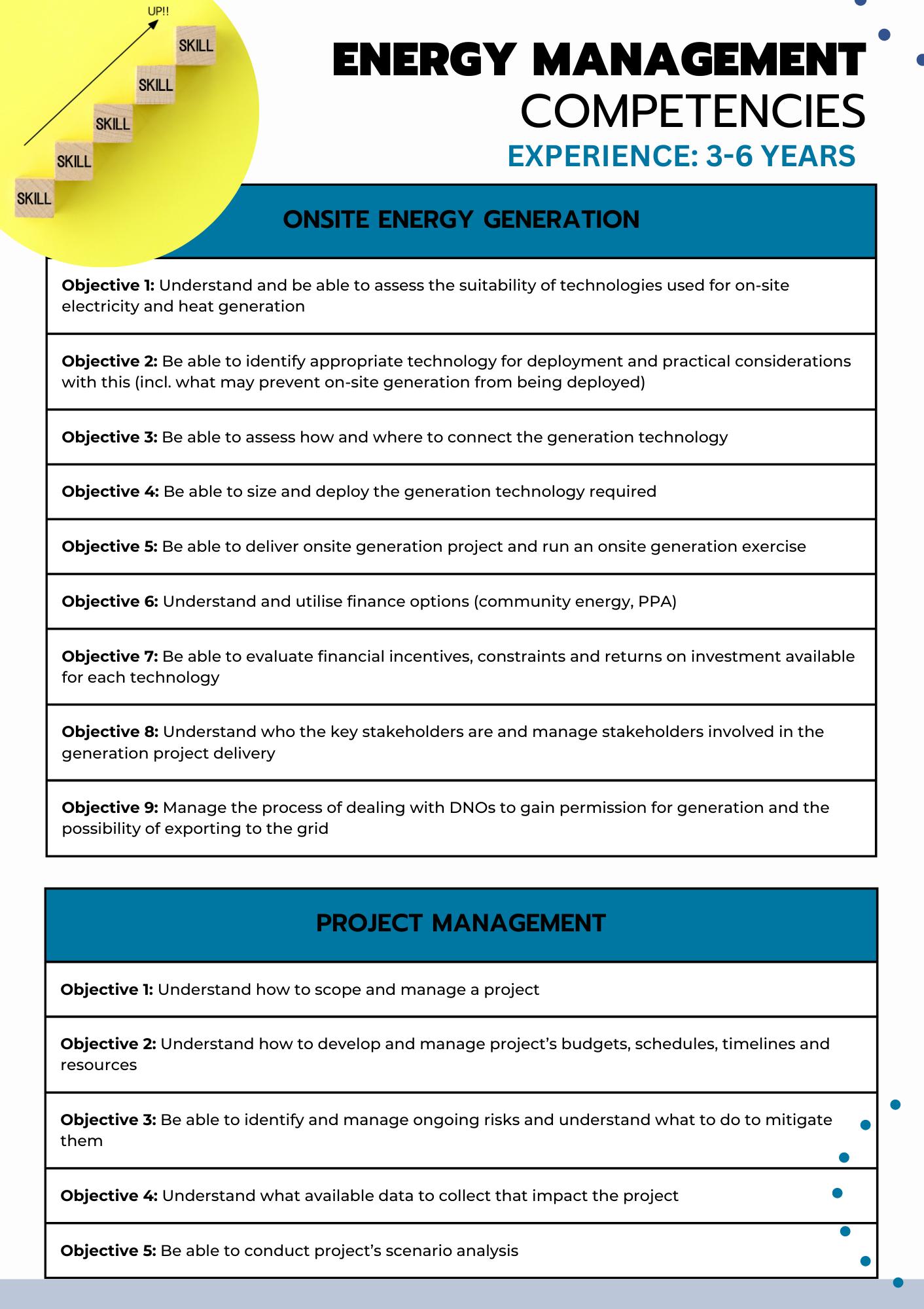




Energy Management Theory Combined with Real-World Applications
SEPTEMBER
7th SECR Compliance
15th Energy Procurement
29th Net Zero Fundamentals and Strategies
OCTOBER
6th Become an ESOS Lead Assessor
13th Reaching Net Zero
20th Energy Monitoring, Targeting and Validation
26-27th Fundamentals of Energy Management
NOVEMBER
10th Energy Auditing Techniques
17th Essential HVAC Control and Optimisation
24th On-site Electricity Generation
30th-1st Dec Energy Management in Building Services
IN-PERSON COURSES
The majority of the courses can be delivered virtually to teams or groups of stakeholders from the same organisation or industry in a standard format, or as tailored sessions (minimum 6 candidates).

For a quote email jana.skodlova@theema.org.uk with your chosen course title and approximate number of staff. We can also develop new, bespoke material to fit your specific needs.
In addition to the virtual training courses, the EMA delivers two in-person courses:
• Understanding and Delivering Behavioural Change Programme course
• Turning Data into Energy Savings course
These courses are scheduled on demand and to express your interest, please email jana.skodlova@theema.org.uk.
For an up-to-date list of all our courses visit our website at www.theema.org.uk
“A huge amount of information on various systems found in building services. Delivered in a nice way where questions were encouraged.”
International BEMS Manager – WeWork

“Excellent knowledge transfer and applicable tools, techniques and methodologies.” Head of Purchasing & Contracts – Metroline
“Very helpful, targeted and specialised. A big help to my professional development.”
Property Project Manager - Field Studies Council
“Well structured, well-paced, right depth.” Energy Manager - Tesco Stores Ltd
Energy efficiency has been creeping up the priority list for many businesses in recent years. Companies across the UK have been driven by factors such as the UK Government’s ambition to cut the nation’s energy use by 15 percent from 2021 to 2030, initiatives like the Energy Savings Opportunity Scheme (ESOS) and, most recently, the cost of energy crisis.
A 2020 survey by The Carbon Trust found that more than 80 percent of UK SMEs were taking action on energy efficiency, with 51 percent aiming to do more in the year ahead . These actions can range from large-scale efficiency investments, such as HVAC system overhauls to longer-term initiatives that encourage staff behavioural change. For example, the October 2022 release of NatWest’s Sustainable Business Tracker found that businesses of all sizes were planning to invest more in staff energy efficiency training in 2023, in strikingly high percentages — 53 percent of SMEs and 78 percent of large enterprises .
For those that are years into their energy efficiency journey, it can sometimes be challenging to identify further areas for improvement. Likewise, businesses spurred on by the cost of energy are searching for cost-effective means of beginning their energy efficiency

process. In both cases the question remains: what can we practically do? There are two ‘quick wins’ that energy managers can do to set themselves up for long-term efficiency.
Review your BEMS
For ongoing improvement, tools such as Building Energy Management Systems (BEMS) are the go-to for most energy managers. A BEMS allows for monitoring and control of most connected systems in a building or across multiple sites and is designed to reduce energy usage for larger electrical systems, HVAC and lighting.
As with all systems, a BEMS is only ever as effective as its deployment. Over time, the set-up of a site can change — certain pieces of equipment may no longer be needed, room layouts or uses can change, or new kit might be brought in. The BEMS should reflect all the changes across a building, but energy managers need to ensure this is the case. Often, updates are missed. Reviewing the set up and configuration of a site’s BEMS is invaluable in accurately assessing the day-today running of a site and energy consumption. In most cases, reviewing BEMS will not directly lead to an improvement in energy efficiency. It will, however, put energy management teams in the best position to identify
areas for improvement.
Connect your small power
Small power is one of the biggest sources of wasted energy in buildings. Covering all the smaller electrical loads that come from a building’s sockets and outlets, data indicates that small power can total more than 25 percent of total energy use in efficient buildings . It’s particularly important in commercial properties, where occupants will often plug in equipment or devices for varying lengths of time but may not necessarily turn off the socket afterwards.
Despite its importance, small power has historically not fallen under the remit of BEMS. As such, energy managers often estimate the energy consumed by plugged in devices on commercial premises or overlook this source entirely.

When small power is factored into most energy management plans, the strategy is generally reliant on behavioural change for occupants and staff. Signage is erected encouraging occupants to turn off unused sockets, and staff receive training and guidance on energy efficiency. These initiatives can work but the impact is often negligible.
An option that can demonstrate a more direct and traceable impact on energy efficiency is to connect small power
to supervisor systems and BEMS. Very recently, there have been strides made in commercial electrical technology that enables energy managers to gain real-time insight into the energy profiles of devices across their buildings. These devices fit the same space as standard switch sockets and are fitted with wireless functionality, allowing them to communicate with a building’s BEMS. With these solutions, data such as electrical load and socket temperature can be monitored and controlled via the BEMS. If a
socket has been left powered on in a room several buildings away outside of regular working hours, energy
at certain times, with occupants able to manually turn devices back on if necessary.
managers can identify this and remotely power down the socket. These sockets can also be scheduled to power down
This is arguably the quickest win for energy managers. The impracticality of managing small power consumption has led many to simply accept a higher baseline of energy consumption in their buildings. Now, that no longer needs to be the case. With just these two quick wins, energy managers can for the first time have a complete view of site-wide energy consumption — and begin to control it like never before.


Providing travellers with a safe place to eat, rest and refuel
Moto Hospitality Ltd (known as Moto) is the “commute and journey home” motorway services company, focused on giving customers the best possible experience whilst taking its environmental and energy usage responsibilities very seriously.
For the last 56 years, Moto has been providing travellers with a safe place to eat, rest and refuel, and currently operates 59 locations across the UK. They are leading the industry in the electric vehicle (EV) revolution, provide powerfully fast broadband, and continue to look for genuinely innovative ways to drive down their environmental impact.

With concerns about their rising energy costs and escalating carbon footprint in their retail and hospitality sites, we were approached by their facilities
manager. Anticipating the financial impact of price rises they wanted to take their sustainability obligations to the next level.
They wanted to mitigate costs
control and inherently inefficient.
Moto saw the benefit in piloting our smart patented high rotor pole switched reluctance motor with advanced device physics, combined with a software controller that provides algorithmic control and intelligence for monitoring and dynamic management, driving unparalleled efficiency.
Together with our app, which would also let them remotely monitor and control the smart motors, Moto could dynamically manage their environments, take full control of their air handling units and maximise air quality, whilst consuming less energy.
and significantly reduce carbon emissions – the main cause of the problems being that they had no effective control over their buildings’ electric motors. They were using legacy (yet common) technology that was difficult to
First, we identified their Donnington Park service station as a potential location for a pilot scheme. This was followed by a site survey and inspection of their thirteen onsite motors. By taking a closer look at their function, the
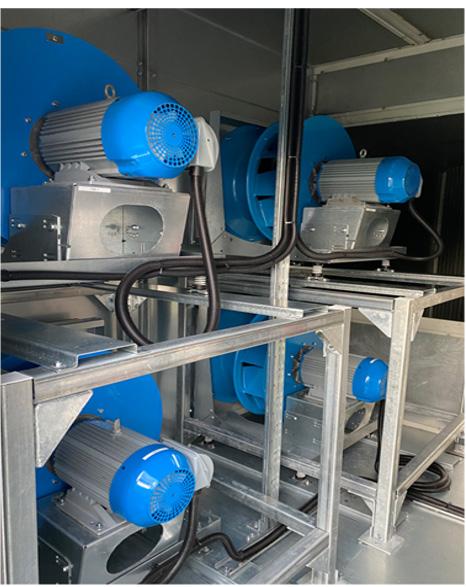

38% energy and cost savings in first year. ROI in less than three years. And that was just the beginning.
environment they operated in, and the volume of air they needed to circulate, we calculated the savings we envisaged Moto making.
• Completed the site survey in 4 –5 hours
• Calculated savings of 29% per annum
• Measured existing motors in situ to determine electricity
consumption
• Installed 13 new motors in 3 – 4 days over a rolling basis (to reduce downtime)
• Each motor only took approximately four hours to install, due to the retrofit opportunity our motors represent
Alternative efficient motors are unable to be retro fitted, and therefore require a refurbishment
Pilot – 6 weeks
• Delivered cost and energy savings of 38% per annum (9% more than predicted)
• Full ROI achievable in 2.6 years (quicker than predicted and at historic electricity prices)
• Saved 134,000 kilowatt hours of electricity
• Saved 52 tonnes of carbon
• The ability to use a new BMS system to actively control air movement
• Lower ongoing maintenance costs
More locations added in a phased rollout
Rolling out additional phases was an obvious next step and they were implemented in a short programme described below.

impact on driving down energy usage: increasing their overall savings to 50%.
In summary, they are delivering optimum air quality for their staff and customers, have full control over the internal environment in each of their locations and have materially reduced energy usage and carbon.
Darren Spruce, Facilities Manager, Moto said:
“At Moto we are always looking for way to drive efficiency, drive down carbon and provide the highest quality (optimal) environment for our staff and customers –partnering with Future Motors allowed us to make a significant impact on our carbon footprint, deliver bottom line savings for our
of the associated air handling units. This is considerably more expensive and can create up to two extra days downtime, further increasing costs.
Minimum downtime, savings that far exceeded our predictions, and better air quality for their retail workers and visitors. The pilot exceeded expectation and paved the way to bigger and better things.
The ROI over both phases is projected at 2.4 years but is likely to be significantly quicker due to increased energy costs.
Moto were so happy with the quality of the installation, and the results it produced, they have introduced a dynamic environmental control by upgrading their building management systems (BMS). This has had an even bigger
business, and generally enable us to embrace the future of facilities management. Our experience of using Future Motors was that the project was delivered on time, to budget, and with minimal disruption to our locations.”
Discover for yourself, the huge cost saving and environmental benefits of our electric motors.
Embrace the future with Future Motors
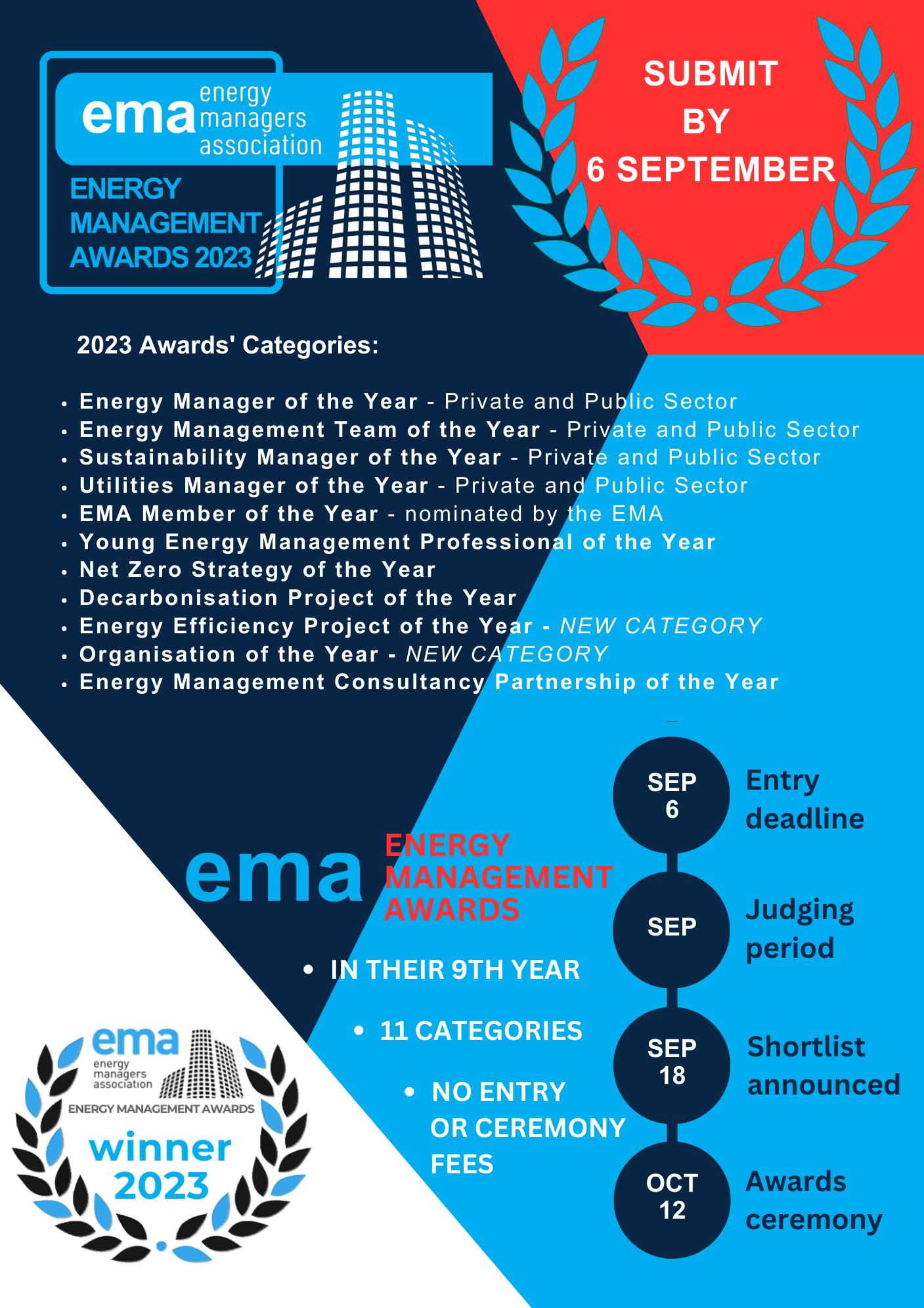
Play a fundamental role in the Energy Savings Opportunity Scheme (ESOS) cycle by ensuring that organisations complete their ESOS compliance in line with the regulatory requirements and by its deadline.
Becoming an ESOS Lead Assessor is a great way to demonstrate your professional ability and step up to the next level in your career. If you achieve this professional status, you can state your sector focus and specialism, allowing you to provide even more value and expertise to the organisation you are working for. ESOS Lead Assessors can be an employee of an organisation which qualifies for ESOS (‘in-house’) or a third party.
Applicants who aim to become approved as ESOS Lead Assessors are expected to demonstrate a good quality and relevant professional energy assessment and energy auditing experience relevant to the PAS 51215 competencies and register with one of the ESOS Lead Asseessor Registers.
Applicants who opt to achieve their ESOS Lead Assessor approval and registration with the EMA will follow these steps:

1. Completion of an Application Pack

2. Attendance of the Become an ESOS Lead Assessor course
3. Completion of a written assessment
4. Completion of a Peer Review and Technical Interview
The ESOS Phase 3 compliance deadline has been extended to 5 June 2024, but do not leave it too late to become an ESOS Lead Assessor. Email us or arrange a call to discuss the requirements of the EMA application and approval process.

